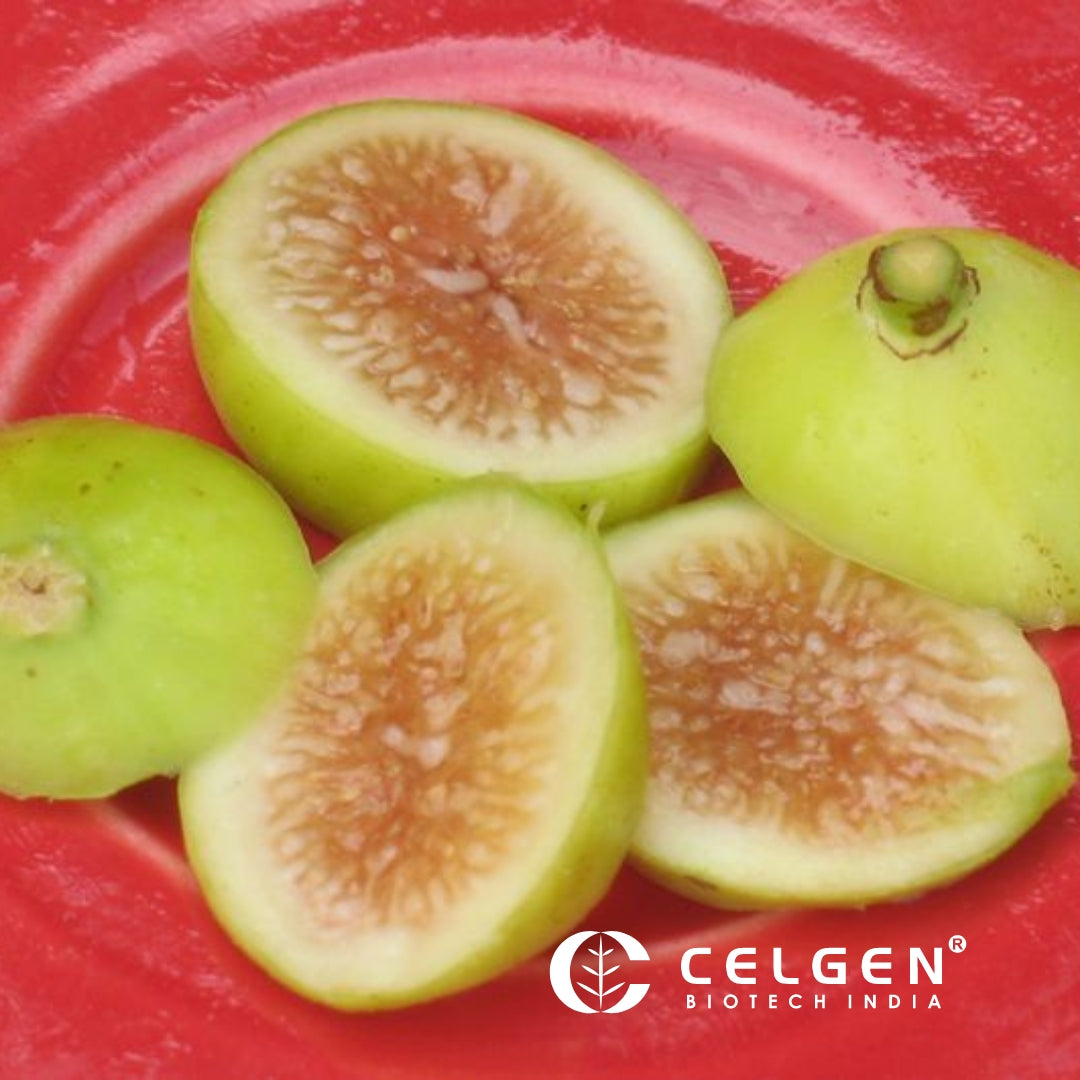My Store
Peters Honey Fig Tissue Culture Plants "Ficus carica"
Peters Honey Fig Tissue Culture Plants "Ficus carica"
Couldn't load pickup availability
Peters Honey fig
Peters Honey fig is a very sweet fig with dark amber flesh and beautiful, shiny greenish-yellow skin. The Peters Honey fig tree produces a high-quality fig that is superb for fresh eating and fine for drying and canning.
History of the Peter’s Honey Fig
The Peter’s Honey Fig tree was introduced to the US by the late Peter Danna. He brought it from his birthplace of Sicily to his home in Portland, Oregon, where the locals hailed it as the superior fig variety.
Danna was an important figurehead in the produce business and is considered to be a green-thumb trailblazer by the Portland gardening community. This fig variety is appropriately named after him to celebrate his legacy in horticulture
The Peters Honey fig trees are a good choice for humid regions of the country. Needs heat to ripen. Do you want to sink your teeth into a fruit that tastes like pure honey? Make this dream a reality and try the Peter’s Honey Fig. This unique fruit variety tastes extremely sweet, and it’s also easy to cultivate at home. This fast-growing tree adds ornamental value to your backyard with little maintenance work.
Characteristics of the Peter’s Honey Fig
Before we dive into eating and growing the Peter’s Honey Fig, let’s look at some key characteristics of this species.
What Does the Plant Look Like?
The Peter’s Honey Fig is a medium-sized tree variety that grows in a round formation. It has lobed leaves with chartreuse veins that pop against the emerald color.
Fruit Attributes
During the warmer months, the tree starts developing green pomes that blend in with the foliage. These baseball-sized fruits eventually turn yellow, which signals that it’s time to harvest.
After cutting through the leathery skin, you’ll find a spongy interior with a white pulp and amber core. The part closest to the skin has a creamy texture but it gets more syrupy towards the center.
Site and Soil:
Figs do well in a variety of soils but require at least 8 hours of sunlight during the growing season.
Pollination Requirements: Self-fruitful.
Hardiness: Hardy to between 0° & 5° F.
Bearing Age: 1-2 years after planting.
Size at Maturity: 8-10 ft in height, smaller with pruning.
Taste: Honey sweet
Fruit Skin: Yellowish-green
Fruit Flesh: Dark amber
Bloom Time: Flowers are not noticeable as they are inside the fig.
Ripening Time: late July – early August
Yield: 10-15 lbs. or more per plant
Pests & Diseases: Figs are not bothered by pests in our region. Cover plants with netting if birds are a problem.
Fig Mosaic Virus is a benign virus that exists in all cultivated fig trees. Yellow spotting of the leaves is a cosmetic symptom that shows more in container culture but is quickly outgrown once trees are planted in the ground.
When Does it Harvest Fruit?
The best feature of the Peter’s Honey Fig tree is that you can expect fruit just after 1-2 years. However, this only happens if your tree receives 6-8 hours of sunlight and isn’t exposed to frost.
Container Planting
If you live in an area with heavy winters or have a small yard, consider planting your fig tree in a container. With proper pruning, it can grow up to 10 feet tall.
Be sure to bring it inside when the weather freezes and place it in a sunny warm spot. While your container tree probably won’t produce fruit, it will still provide ornamental value to your surroundings.
Share





Very nice plant and packing
Very good quality plants with tags, fast delivered,
Thank you for the beautiful plants.
Received a healthy plant and packaging is excellent.
Good





